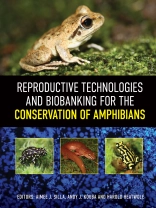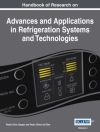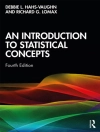How to decelerate loss of global biodiversity is one of the greatest challenges of our generation. Reproductive technologies have enormous potential to assist the recovery of species by enhancing reproductive output, facilitating genetic management, and supporting reintroduction of threatened species. Of particular value are cryopreservation technologies coupled with the establishment of global gene banks to conserve, in perpetuity, the remaining extant genetic diversity of threatened amphibians.
Reproductive Technologies and Biobanking for the Conservation of Amphibians brings together leading experts in the field to provide a comprehensive overview of current best practices, summarise technological advancements, and present a framework for facilitating the integration of reproductive technologies and biobanking into conservation breeding programs for threatened amphibians. It is an invaluable reference for the next generation of conservation practitioners: captive breeding facilities, researchers, and policy-makers involved with biodiversity conservation.
表中的内容
Dedication
List of contributors
Preface
Volumes in the series
Amphibian Biology
1. Integrating reproductive technologies into the conservation toolbox for the recovery of amphibian species
2. Status of global amphibian declines and the prioritisation of species for captive breeding
3. Methods of identifying the sex of amphibians and of conditioning captive brood stock for assisted reproduction
Colour plates
4. Hormonal control of amphibian reproduction
5. Non-invasive monitoring of stress physiology during management and breeding of amphibians in captivity
6. Ultrasonography to assess female reproductive status and inform hormonally induced ovulation
7. Protocols for hormonally induced spermiation, and the cold storage, activation, and assessment of amphibian sperm
8. Genetic management of threatened amphibians: using artificial fertilisation technologies to facilitate genetic rescue and assisted gene flow
9. Cryopreservation of amphibian genomes: targeting the Holy Grail, cryopreservation of maternal-haploid and embryonic-diploid genomes
10. Culturing and biobanking of amphibian cell lines for conservation applications
11. Linking
in situ and
ex situ populations of threatened amphibian species using genome resource banks
12. Genome resource banks as a tool for amphibian conservation
Appendix
Index
关于作者
Harold Heatwole has four doctorates and holds Professorships at North Carolina State University and University of New England. He researches herpetology, biogeography, polar ecosystems, vegetation dynamics, as well as ants, tardigrades, and seabirds. Harold Heatwole was also a co-editor of Volume 11, Part 6 of the Amphibian Biology series, Status of Conservation and Decline of Amphibians: Australia, New Zealand, and Pacific Islands (CSIRO Publishing, 2018).












